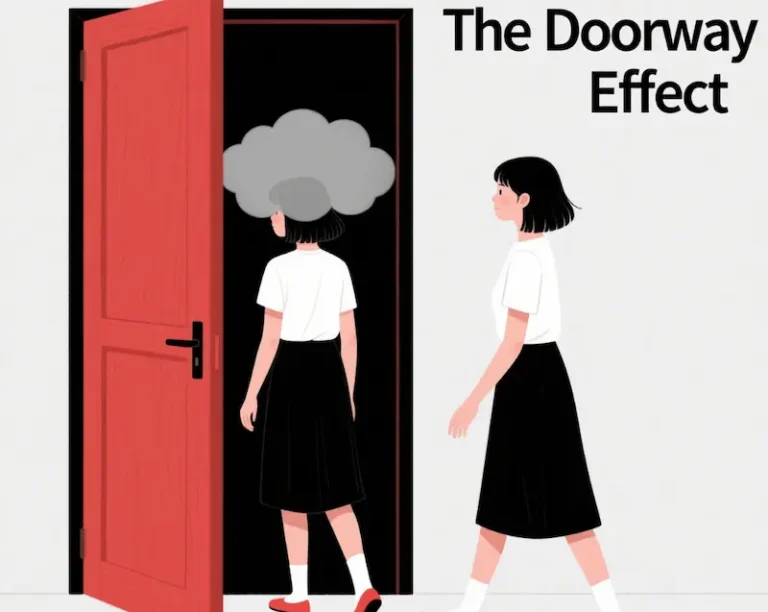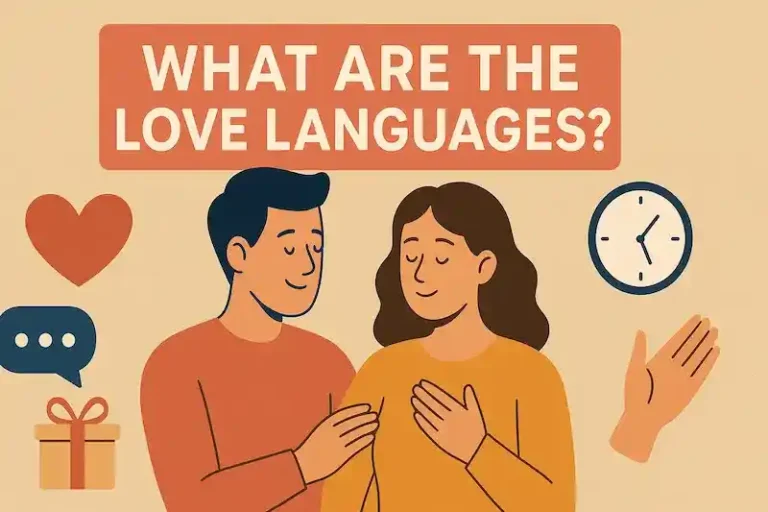Understanding Avoidant Personality: Signs, Causes, and How to Communicate With Them

Table of Contents
Have you ever met someone who seems to “shut down” when you get close—maybe a coworker who skips every team lunch, a friend who never shares their feelings, or a partner who pulls away when you talk about the future? If their distance feels less like “being shy” and more like a pattern, they might exhibit avoidant personality traits. These traits aren’t just occasional awkwardness; they’re deep-seated habits that stem from a fear of rejection and a belief that they’re “not worthy” of connection. For many Americans, these traits show up in everyday life—from avoiding office small talk to hesitating to commit in relationships—but few people understand what’s really driving the behavior. Let’s break down what avoidant personality is, why it happens, and how to navigate it.
What Is Avoidant Personality?
First, it’s critical to clarify: avoidant personality is not the same as “being introverted” or “having a bad day.” Introverts recharge alone; people with avoidant traits avoid connection to protect themselves. The American Psychological Association (APA) defines avoidant personality traits as a “long-term pattern of avoiding social interaction and feeling inadequate,” distinct from temporary social withdrawal (like skipping a party when you’re tired).
Unlike Avoidant Personality Disorder (a more severe condition diagnosed in about 2.4% of U.S. adults, per DSM-5), avoidant personality traits are common—many people exhibit them to some degree. The key difference? Traits are flexible (you can learn to manage them), while a disorder disrupts daily life (e.g., missing work to avoid meetings).
At their core, these traits come from one fear: being judged or rejected. Someone with avoidant personality might think, “If they really get to know me, they’ll realize I’m not good enough,” so they keep others at arm’s length. This isn’t arrogance—it’s a defense mechanism.
Key Signs of Avoidant Personality
You can spot avoidant personality traits in how someone acts in social, professional, and romantic settings. These signs aren’t “flaws”—they’re coping strategies. Here are the most common ones:
1. Intense Fear of Social Situations
People with avoidant personality don’t just “dislike” parties—they feel physical anxiety at the thought of attending. This might look like:
- Making excuses to skip team-building retreats, birthday dinners, or community events (e.g., “I have a work deadline” or “I’m not feeling well”).
- Freezing up during small talk (e.g., staring at their phone to avoid eye contact with a neighbor).
- Feeling dizzy, sweaty, or short of breath when forced to socialize (symptoms of social anxiety, which often overlaps with avoidant traits).
A 2023 study from the University of Michigan found that 68% of people with avoidant traits report “extreme discomfort” in group settings—even small ones, like a 3-person work meeting.

2. Low Self-Esteem and Sensitivity to Criticism
Self-doubt is a hallmark of avoidant personality. Someone with these traits might:
- Dismiss their own achievements (e.g., saying “I just got lucky” when they get a promotion).
- Overthink casual comments (e.g., interpreting a coworker’s “Let’s tweak this idea” as “You did this wrong”).
- Avoid sharing opinions (e.g., staying quiet in a book club because they’re scared of “sounding stupid”).
The APA notes that this sensitivity often comes from a childhood where their worth was tied to “being perfect”—so any hint of criticism feels like a confirmation of their worst fear: “I’m not good enough.”
3. Distant Relationships (Romantic and Platonic)
In love or friendship, avoidant personality traits show up as “emotional distance.” For example:
- A partner who pulls away when you talk about the future (e.g., changing the subject when you mention moving in together).
- A friend who never shares hard times (e.g., saying “I’m fine” when they’re going through a breakup).
- Avoiding physical affection (e.g., pulling back from a hug) even if they want it.
This isn’t about “not caring”—it’s about fear. A 2022 study in the Journal of Social and Personal Relationships found that 72% of people with avoidant traits report “scared of being abandoned” as the reason they keep distance in relationships.
What Causes Avoidant Personality Traits?
Avoidant personality doesn’t “just happen”—it’s shaped by a mix of childhood experiences, social history, and biology. Here’s the science behind it:
1. Childhood Experiences (The Biggest Factor)
Your early years lay the groundwork for how you see connection. Research from Johns Hopkins Medicine shows that two childhood patterns are most linked to avoidant traits:
- Chronic criticism: Parents or caregivers who focus on mistakes (e.g., “Why can’t you be more like your sibling?”) teach kids to associate “being themselves” with rejection.
- Emotional neglect: When caregivers don’t respond to a child’s need for comfort (e.g., ignoring them when they’re upset), kids learn “My feelings don’t matter”—so they stop sharing them.
Attachment theory (developed by psychologist John Bowlby) explains this: Kids who don’t feel “safe” to be vulnerable grow up to avoid vulnerability altogether.

2. Negative Social Experiences
Adolescence and early adulthood can reinforce avoidant traits. Common triggering events include:
- Being bullied or excluded in middle/high school (e.g., being left out of lunch tables or group chats).
- Public embarrassment (e.g., a teacher mocking their answer in class).
- A toxic relationship (e.g., a partner who criticized their every move).
These experiences teach the brain: “Social interaction = pain.” So the brain learns to avoid it to stay safe. A 2021 survey by the Anxiety and Depression Association of America (ADAA) found that 80% of adults with avoidant traits traced their first avoidance behavior to a negative teen social experience.
3. Genetic and Biological Factors
Biology plays a small but significant role. Studies show:
- Genes: Certain genes affect how your brain processes anxiety. For example, a variation in the 5-HTTLPR gene (linked to serotonin, the “happy chemical”) can make you more sensitive to stress—including social stress.
- Brain structure: The amygdala (the part of the brain that processes fear) is more active in people with avoidant traits, per a 2020 MRI study from Stanford Medicine. This means they feel “threatened” more easily in social situations.
It’s important to note: Biology isn’t destiny. Even if you’re genetically prone to avoidant traits, you can learn to manage them.
How to Cope with Avoidant Personality Traits (For Yourself or a Loved One)
Avoidant traits don’t have to control your life. Whether you’re struggling with them or supporting someone who is, these strategies work—backed by psychology research.
1. Professional Therapy (The Most Effective Tool)
Therapy helps you unlearn the “avoid to survive” habit. The two most evidence-based approaches are:
- Cognitive Behavioral Therapy (CBT): CBT focuses on changing negative thoughts (e.g., “They’ll reject me”) to more realistic ones (e.g., “Most people are too busy worrying about themselves to judge me”). A 2023 APA study found that CBT reduces avoidant behaviors by 50% in 8-12 weeks. Therapists might assign small “social homework”—like asking a barista for a recommendation—to build confidence.
- Psychodynamic Therapy: This digs into past experiences (like childhood criticism) to help you understand why you avoid connection. For example, a therapist might help you realize your fear of rejection comes from a parent who ignored you—and that adults today won’t necessarily do the same.
In the U.S., you can find a therapist specializing in avoidant traits via Psychology Today’s directory or your insurance provider (many plans cover CBT).
2. Self-Help Strategies (Start Small)
Therapy works best with daily practice. Try these steps to build confidence:
- Practice self-compassion: Write down one thing you did well each day (e.g., “I said hi to my neighbor”). This fights the “I’m not good enough” narrative.
- Challenge your comfort zone—slowly: Don’t jump into a big party. Start with 5-minute interactions (e.g., commenting on a coworker’s plant) and work up.
- Label your fear: When you feel the urge to avoid, say out loud: “I’m scared of rejection, but that’s just my brain protecting me.” Naming the fear takes away its power.
The ADAA recommends starting with one strategy a week—consistency matters more than speed.
How to Communicate with Someone Who Has Avoidant Personality Traits
Loving or working with someone with avoidant traits can be frustrating—but with empathy, you can build trust. Here’s how:
1. Be Patient (Don’t Push)
Avoidant people need time to open up. For example:
- If they skip a party, don’t say “You never come out!” Instead, say “No worries—let me know if you want to hang out one-on-one later.”
- If they don’t share their feelings, don’t press: “I’m here if you want to talk, whenever you’re ready.”
Pushing them to “be more open” triggers their fear of rejection. A 2022 study in Family Process found that patience is the top factor in building trust with avoidant partners.

2. Build Trust Through Consistency
Avoidant people fear being let down—so small, reliable actions matter most. Try:
- Keeping your promises (e.g., if you say you’ll call, call).
- Giving specific compliments (e.g., “I loved your idea in the meeting—it made me think differently”) instead of generic ones.
- Avoiding criticism (even constructive feedback) until you’re close. Save “I think we could tweak this” for later—start with “I appreciate you working on this with me.”
Trust takes time: A 2021 survey of people with avoidant traits found that it takes 6-12 months of consistent behavior to feel “safe” with someone.
3. Respect Their Boundaries
Boundaries aren’t “rejection”—they’re how avoidant people feel safe. For example:
- If they say “I need alone time,” don’t take it personally. Say “Take all the time you need—I’ll check in tomorrow.”
- Don’t ask overly personal questions early on (e.g., “Why don’t you talk to your family?”). Let them share at their own pace.
- Avoid public displays of affection if they’re uncomfortable—ask what feels okay (e.g., “Do you want to hold hands here, or wait until we’re alone?”).
CTA
Avoidant personality traits are common, but they’re not invisible—or unchangeable. Whether you’re navigating these traits yourself or supporting someone who is, the key is compassion: for them, and for yourself. Understanding the signs (social fear, low self-esteem, emotional distance) and causes (childhood, social trauma, biology) helps you stop seeing “distance” as “rejection” and start seeing it as a cry for safety.
Therapy (like CBT) and small, consistent steps can help shift these patterns—and building trust with an avoidant person is about patience, not pressure. Remember: Connection isn’t about being “perfect” at it—it’s about showing up, even when it’s scary.
What about you? Have you ever struggled with avoidant traits, or supported someone who has? Share your tips in the comments below—your experience could help someone else feel less alone.






